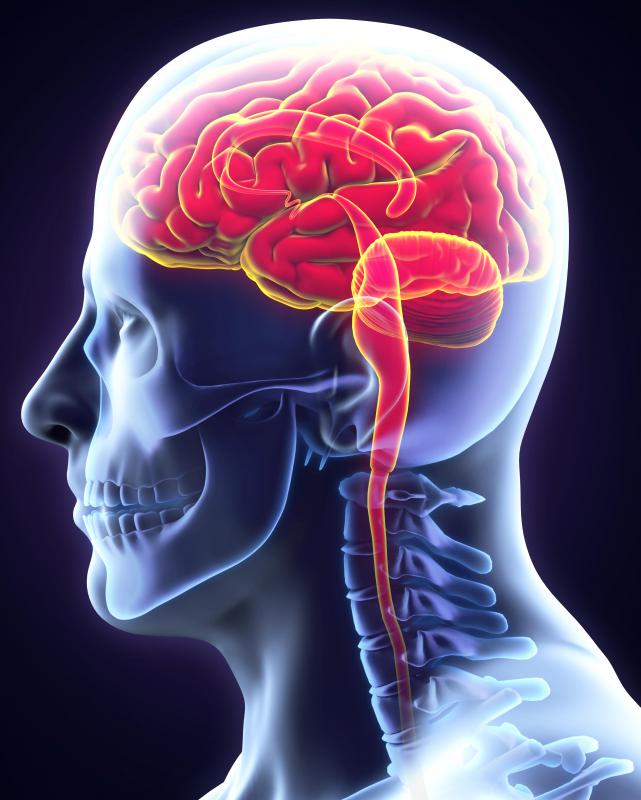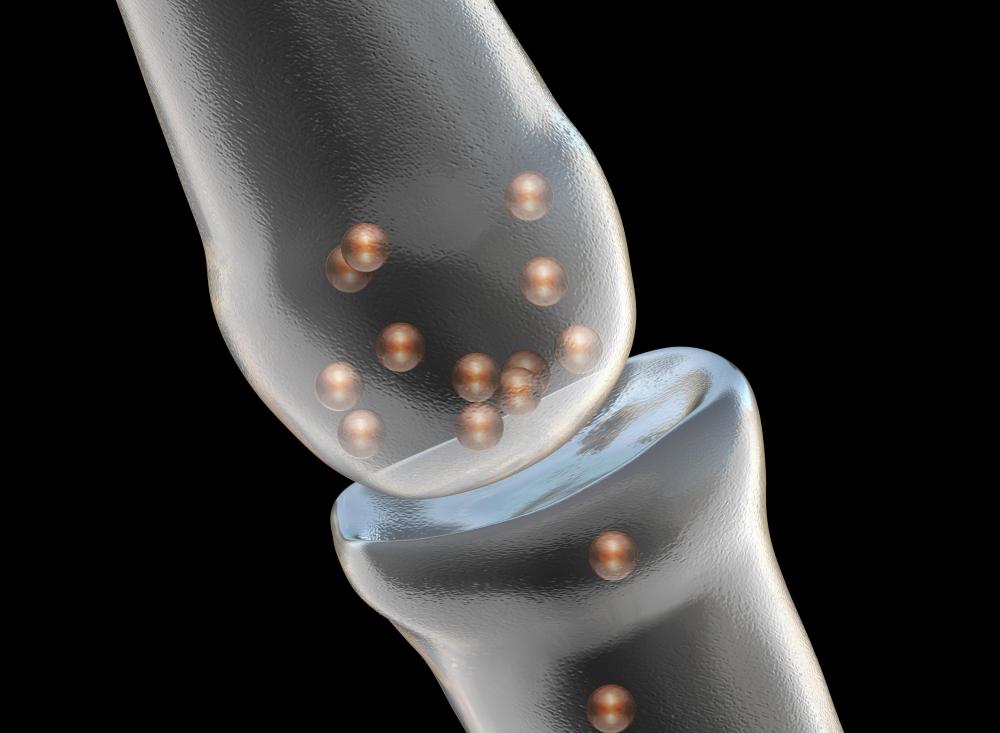At TheHealthBoard, we're committed to delivering accurate, trustworthy information. Our expert-authored content is rigorously fact-checked and sourced from credible authorities. Discover how we uphold the highest standards in providing you with reliable knowledge.
What are the Organs of the Nervous System?
When a person touches a hot plate or catches a ball, the organs of the nervous system are responsible for the body’s coordinated response. This system is made up of the brain, spinal cord, and a network of neurons and glial cells that travel the length and breadth of the body. The organs are found in vertebrate and some invertebrate animals, and all network together to provide response to stimuli.
The nervous system is often called the central processing unit (CPU) for an animal. It translates information from every part of the body and then directs the appropriate response. The nervous system is broken down further into the central nervous system and the peripheral nervous system. The central nervous system is made up of the brain, the spinal cord and even the retina, and it is directly responsible for the translation of the messages sent by the peripheral nervous system, which is the network of nerves that run throughout the body.

Neural pathways are the routes that neurons take to send messages to the brain and spinal cord, which then translate the messages and send responses back. Neurons produce neurotransmitters, special chemicals, at the point of the junction of neurons, called synapses. Every part of the human body is filled with neurons, and they allow the senses to function and the limbs to respond. Humans have as many as one billion cells dedicated to the nervous system.

If the central nervous system is the CPU for an animal, then the brain stem is the CPU for the nervous system itself. The brain stem is comprised of the midbrain, the pons and the medulla oblongata. These are the parts of the brain that connect directly to the spinal cord, and injury to this area can result in permanent paralysis or loss of any type of motor response.

The study of the brain and its functions is called neuroscience. Neuroscience attempts to unlock the mysteries of the brain, as there are still many things that medical experts do not know or understand about this organ and how it functions. The field also studies injuries to the spinal cord that result in partial or full paralysis, as well as strokes and their resulting effects on the different parts of the body.

Sponges, mesozoans and placozoans are examples of multi-cellular organisms that do not have nervous system organs, but most other animals do. This includes the group of animals to which humans belong, called bilateria, as well as most of the vertebrates and invertebrates.
AS FEATURED ON:
AS FEATURED ON:














Discussion Comments
I just learned today in class that the neurons that carry information about the sense of touch send messages more quickly than neurons that carry messages of pain to the brain. That's why when we hit our arm or leg on something, we tend to rub it with our hand. Our brain and nervous system become more occupied about us rubbing it than the pain of the injury. So in a way, it reduces the intensity of pain that we feel.
Isn't this cool?
@fify-- There is still a lot we don't know about the nervous system. But we do know that the symphathetic branch of the nervous system gets activated when someone is under threat. This doesn't have to be physical threat, it can also be emotional and psychological threat.
When this branch gets activated, the body uses immense energy for the fight or flight response and weakens the body in the process. So it's not abnormal for someone who is under stress to get sick. For example, the symphathetic branch uses the thyroid gland, so someone under prolonged periods of stress may have issues with their thyroid.
The good news is that when the stress passes and that person is resting and happy, the parasymphathetic branch of the nervous system will get activated. This branch is responsible for regenerating and healing the body.
I was told that worrying and psychological traumas can cause damage to the spinal cord. It can lead to hernias and other diseases of the nervous system. Since this system, which includes the spine, is connected to the brain, is this possible?
Post your comments